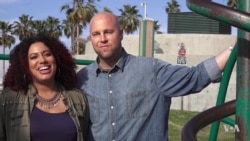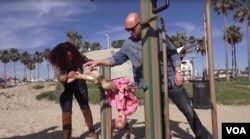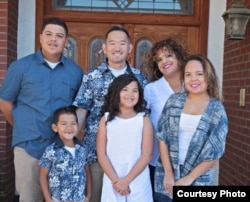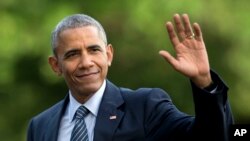Delia Douglas’ experience growing up has been different from the rest of her schoolmates.
“In any of the storybooks that I was reading growing up, I remember the families always looked a certain way. Both parents matched,” she said. “Even it seemed like in many of the storylines that were about animal families, both bears kind of looked the same, and the baby bear looked the same.”
These storybooks did not reflect her family. Douglas’ father is African American and American Indian. Her mother is white. And Douglas is married to William Haight, who is white. They have a 5-year-old daughter who is fair skinned, with light hair.
“Especially in the first three years of my daughter’s life, people often would stop and ask me if I was the nanny. There were days when that would be incredibly frustrating,” Douglas recalled.
Mixed-race background
Life hasn’t always been easy for Douglas’ brother Ronnie Nells, who shares her mixed-race background.
“I was pulled over, I think, once a month for a year, and just asking where I was headed and what I was doing, or another cop would stop me,” said Ronnie Nells.
The Pew Research Center finds that 4 in 10 mixed-race Americans with black as a part of their racial makeup say they have been unfairly stopped by police. Sixty-nine percent say most people see them as black, and that their experience is more similar to the black community.
It was 50 years ago that the U.S. Supreme Court struck down laws that prohibited mixed marriages. Since then, there has been a sharp increase in interracial marriages.
According to the Pew Research Center, the number of mixed-race Americans is growing three times faster than the U.S. population as a whole. The U.S. Census projects the multiracial population will triple by 2060. In the 1970s, 1 percent of children were of mixed race. That number has grown to 10 percent.
Many mixed-race Americans, including Damona Hoffman who is Russian Jewish and African American, find living in Los Angeles is much easier for biracial people than in other cities.
Viviane Arlotto, who is South Korean and Belgian, grew up in many different places, including South Korea and the United States, and agrees Los Angeles is more accepting of people of mixed race.
World City Center
Arlotto and Hoffman send their children to World City Center in Los Angeles, a preschool where 30 percent of the students are multiracial.
“I grew up in a really homogenous neighborhood and felt like the other [race] so it was important for my son to be in a place where he felt normal,” Arlotto said.
The co-founder of World City Center, Rebecca Bernard, is multiracial. Her mother is white, from the American Midwest. Her father is Afro-Latino from Costa Rica. She remembers growing up struggling with her own identity.
“The ’80s were not a time when it was necessarily celebrated, but I don’t feel like it came with the stigma of the 60s and 70s. It was this strange, becoming normal type of a situation to have mixed-race households. Now, it’s even becoming more common.”
Bernard interviews parents at her school and incorporates cultural elements into the curriculum.
“We use cooking. We use art. We use songs. We use stories to really just solidify that that is you, and that is OK, and you’re perfect just how you are,” she said.
“What President [Barack] Obama did was he brought hope for somebody like my children and myself that identity as multiracial, or biracial, or a person of color. He just brought hope that they too could be president one day,” said Sonia Smith-Kang, who is with Multiracial Americans of Southern California (MASC).
How to talk to children about race
For the past 26 years, the advocacy group has been teaching communities how to talk to children about race.
“In the year 2000, the U.S. Census actually allowed for individuals to check more than one box, so now each person was able to see, for instance, I’m Mexican and black, so I was able to check more than one box. And so we’ve noticed an uptick in the amount of multiracial folks,” Smith-Kang said.
Smith-Kang’s husband is Korean American with immigrant parents. He said his parents originally expected him to marry a Korean woman.
“To me it wasn’t anything. But my parents, they were a little surprised. I have to say they weren’t accepting of it at first,” he said.
Smith-Kang said there was fear of a language barrier, but the Korean grandparents came around, and the children speak Korean and Spanish to communicate with grandparents of both sides.
“Families who are multiracial and multicultural, [are] usually multilingual as well. They understand the importance of knowing another language,” said Angelika Getmanchuk, founder of WorldSpeak School in Los Angeles.
It is a multilingual immersion school that includes Mandarin, Spanish and French as options for the students, about 80 percent of whom are mixed race.
Many mixed-race Americans see a growing social acceptance of people of mixed backgrounds.












